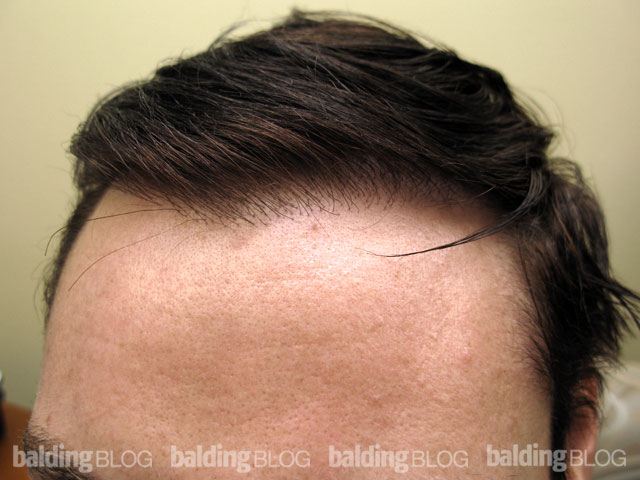Hi Dr Rasman – many thanks for the very appreciated blog.
2 years ago I underwent an aggressive hairline FUE procedure – 3,000 grafts all in the hairline with temple closure.
I’ve recently started shaving my head and, despite the white-dotted donor area, I feel much better about myself. I’d love to continue shaving my head – the problem is the recipient area. My recipient hairs, though not particularly dense, are much thicker than the natural hair behind them and begin with a very sudden, ‘flat’ line. The texture of the skin is bumpy and *may* form a small ridge at the start of the hairline; it’s difficult to tell whether it’s scarring, or just hair follicles pushing up the skin.
If I were to remove the grafts, is there any hope of restoring a natural-looking, albeit bald area where my current transplanted hairline is? If so, what sort of treatments would you suggest?
Thanks again for the site
Oh wow! 3000 grafts to the hairline and temples does sound very aggressive, if not impossible from my personal experience. The bumpy skin texture you describe can be scarring from your surgery and if it is scarring there really is no treatment for it. I am not implying you had a bad surgery, but hair transplant surgery is not reversible. Hair transplant surgery is permanent and you need to have a good foundation and understanding of what you are getting yourself into, as well as the long term complication and issues (such as scarring and shaving) before you regret the decision.
There are doctors who do 3000 grafts routinely in a small area of the frontal line and I have seen the work. The hairlines I have seen are straight and many times I doubt that the patient actually got the 3000 grafts they paid for, which makes me question the integrity of the doctor. These hairlines can be repaired by creating a good transition zone in front of the harsh tight hairline, but that assumes that the hairline was not placed too low in the first place. Often in some of these patients the hairline is too low, making a good repair very difficult. Each case is different and I would love to see you either in consultation or good digital photographs of your frontal hairline.
![]()
![]()



